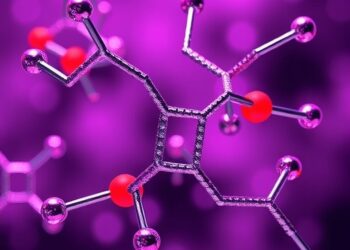To become cultured throughout National Dairy Month in June, or specifically on National Cheese Day (June 4), food lovers can embrace their passion and pick up something gouda to eat. These udderly tasty products come from cows, buffalo, goats, sheep — and even plants. Despite thousands of years spent maturing this culinary staple, researchers continue to moove forward with cheese advancements. Some can be found in these four papers published in ACS journals. Reporters can request free access to these papers by emailing newsroom@acs.org.
To become cultured throughout National Dairy Month in June, or specifically on National Cheese Day (June 4), food lovers can embrace their passion and pick up something gouda to eat. These udderly tasty products come from cows, buffalo, goats, sheep — and even plants. Despite thousands of years spent maturing this culinary staple, researchers continue to moove forward with cheese advancements. Some can be found in these four papers published in ACS journals. Reporters can request free access to these papers by emailing newsroom@acs.org.
- Adding whey protein into a semihard cheese. Traditional semihard cheeses don’t incorporate whey protein, a potentially functional ingredient for cheesemaking. So, a pilot study published in the Journal of Agricultural and Food Chemistry tested adding whey protein to a semihard Edam-type cheese by mixing high heat-treated milk (208 degrees F), which contained denatured whey proteins, into the pasteurized milk (treated at 162 F) used for cheesemaking. The team found that the new cheeses ripened slower and were firmer, though they also tasted slightly more bitter and had a sandier consistency than cheeses made at the same time without the high-heat milk.
- A probiotic cottage cheese. Scientists encapsulated probiotic microbes in edible microcapsules and added them to cottage cheese, creating a more healthful product. The cottage cheese with microbes encapsulated in a 1% sodium alginate and 1% carrageenan gum coating produced a pleasant-tasting semisoft dairy product, which panelists preferred to versions containing higher proportions of sodium alginate. The researchers report additional nutritional analyses and sensory test results for the new functional cheese in the open access journal ACS Omega.
- Mimicking cheesy scents with plants. To produce a natural cheese-like aroma, researchers evaluated how two fungi-fermented soy or sunflower proteins with coconut oil. The odor compounds produced by both fungi were similar to multiple animal milk-derived cheese samples. Therefore, fungal fermentation could be a sustainable way to produce natural cheese-like aromas for plant-based cheese alternatives, the researchers say in the Journal of Agricultural and Food Chemistry.
- Leftover goat milk fats from buttermaking. Milk fats in the whey left over from making goat cheese or butter could be a functional ingredient in infant formula. Of three methods to collect these fats, a study in the Journal of Agricultural and Food Chemistry suggests that adding rennet to the liquid left over from making goat butter creates a product with the best composition, including the greatest abundance of phospholipids, gangliosides and omega-3 fatty acids such as DHA. Using this material to enrich other foods could have positive effects on a consumer’s health, the authors conclude.
The American Chemical Society (ACS) is a nonprofit organization chartered by the U.S. Congress. ACS’ mission is to advance the broader chemistry enterprise and its practitioners for the benefit of Earth and all its people. The Society is a global leader in promoting excellence in science education and providing access to chemistry-related information and research through its multiple research solutions, peer-reviewed journals, scientific conferences, eBooks and weekly news periodical Chemical & Engineering News. ACS journals are among the most cited, most trusted and most read within the scientific literature; however, ACS itself does not conduct chemical research. As a leader in scientific information solutions, its CAS division partners with global innovators to accelerate breakthroughs by curating, connecting and analyzing the world’s scientific knowledge. ACS’ main offices are in Washington, D.C., and Columbus, Ohio.
To automatically receive news releases from the American Chemical Society, contact newsroom@acs.org.
Note: ACS does not conduct research, but publishes and publicizes peer-reviewed scientific studies.
Follow us: X, formerly Twitter | Facebook | LinkedIn | Instagram




